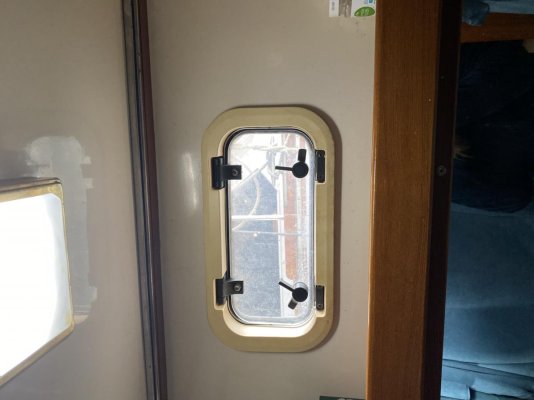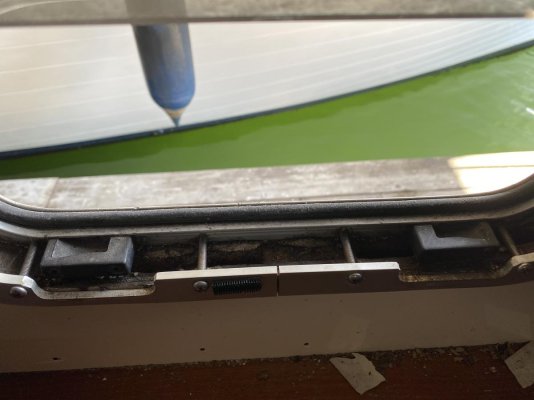Night Watch
Veteran Member
My Nova36’ aft head porthole leaks and the core underneath is mush for about a foot. I even saw where it disolved too when fixing a clogged sink and there is a big wad of fiber that I though was something else then glad it was wood fiber!
The boat is dry now (as I’m undercover for a year) and want to replace/ repair old standard Lewmar hatch. The old plastic trim is shot so want new window/port light with same size whole and better design.
TGOD. (The guy on dock, I think most of us have that guy) says I need to inject epoxy into the space between the outside and inside cabin walls under the port light to stabilize for material that disolved-
Has anyone done this and what product did you use?
Tips and warnings appreciated/ ill do this my self so can use your collective knowledge.
The boat is dry now (as I’m undercover for a year) and want to replace/ repair old standard Lewmar hatch. The old plastic trim is shot so want new window/port light with same size whole and better design.
TGOD. (The guy on dock, I think most of us have that guy) says I need to inject epoxy into the space between the outside and inside cabin walls under the port light to stabilize for material that disolved-
Has anyone done this and what product did you use?
Tips and warnings appreciated/ ill do this my self so can use your collective knowledge.


